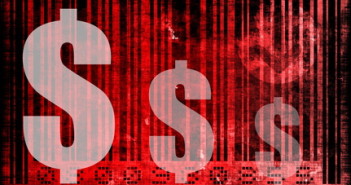The US dollar experienced a very volatile week last week, with shockingly low GDP data eclipsing the positive jobs growth news, and more volatility expected this week. GDP for the first three months of the year in the US was just 0.1%, substantially lower than the forecast rate of 1.2% and the lowest reading since 2012. However, there were some positive news on Friday when the US payrolls data showed 288,000 new jobs were created last month, much higher than the 250,000 number that was forecast, and the unemployment rate dropped down to 6.3%, the lowest since September 2008. The strong employment data suggests that the low GDP rate was simply symptomatic of the unusually long and cold winter that much of the US endured this year and may just be a temporary dip. Should the Q2 figure also disappoint, this would be a bigger problem as it would indicate systematic weakness in the US recovery.
More volatility is expected for USD pairs on Wednesday, when Federal Reserve Chairwoman Janet Yellen testifies before the Joint Economic Committee of Congress. Yellen will be required to respond to unscripted questions as part of this appearance and the market will be eagerly observing her answers, with a hawkish tone likely to boost USD. Forex traders should closely watch EUR/USD and GBP/USD during this period as it may offer short-term opportunities.
The central banks of the UK and the Eurozone are both due to announce interest rate decisions this Thursday and, although no interest rate changes are expected to be announced, the press conferences following each announcement should be closely monitored for GBP and EUR price movements.
ECB President Mario Draghi is continuing to be pressured to instigate monetary stimulus measures to stimulate the Eurozone economy, but he is so far stubbornly refusing to intervene. Eurozone inflation data released last week showed a slight nudge higher from 0.5% to 0.7% which reduced the pressure on Draghi to intervene, even though the data fell short of the forecast 0.8%. Should the Eurozone economy continue to edge towards the right direction, Draghi is unlikely to instigate any stimulus measures. The EUR/USD pivot point is 1.3881 with resistance levels at 1.3883, 1.3886 and 1.3888; and support levels at 1.3878, 1.3876 and 1.3873.
Meanwhile, UK rates are forecast to remain unchanged in the short term, and independent research conducted by Scotiabank released last week claimed that when the Bank of England does raise interest rates, the UK recovery could be thrown off course with households likely to suffer from a sharp fall in disposable income. The research stated that around 1.2 percentage points could be wiped from the UK GDP growth in the wake of interest rate rises, a figure that may well impact BoE Governor Carney’s monetary policy strategy. In the meantime, preliminary GDP data to be released on Tuesday is expected to show 0.9% growth in the first quarter which is likely to provide a nice boost to GBP. The GBP/USD pivot point is 1.6889, with resistance levels at 1.6892, 1.6894 and 1.6897; and support levels at 1.6887, 1.6884 and 1.6882.
On Tuesday, the Reserve Bank of Australia (RBA) kept interest rates unchanged at 2.5% with Governor Stevens stating: “The decline in the exchange rate from its highs a year ago will assist in achieving balanced growth in the economy, but less so than previously as a result of the rise over the past few months. The exchange rate remains high by historical standards.” Despite this confident statement, the pressure may soon be on the RBA with an independent report this week showing that inflation has risen by a further 0.4% to 2.8% which could force the RBA to raise interest rates in the coming months. The AUD/USD pivot point is 0.9281, with resistance levels at 0.9291, 0.9296 and 0.9306; and support levels at 0.9276, 0.9266 and 0.9261.
Early Asian trading this week was hit by a poor Chinese HSBC Manufacturing PMI reading of 48.1, down from 48.3 and lower than the forecast reading of 48.4. This indicator provides insight into the critical manufacturing sector and acts as one of the main indicators of the health of the overall Chinese economy. The low figure, well below the delineating number of 50 indicates the manufacturing economy continues to be in decline. Investors reacted by turning to the safe haven yen which enjoyed a boost of 0.2% with USD/JPY trading at 101.97 in early trading on Monday. The likelihood of Bank of Japan Governor Kuroda adding further stimulus measures to boost the Japanese recovery now seems less likely after he stated on the weekend that the recovery is on track. The USD/JPY pivot point is 102.03, with resistance levels at 102.06, 102.08 and 102.11; and support levels at 102.01, 101.98 and 101.96.
What to Watch this Week:
EUR/USD and GBP/USD should offer the best opportunities on Wednesday during Janet Yellen’s testimony in the US.
Guest post by FXTM
